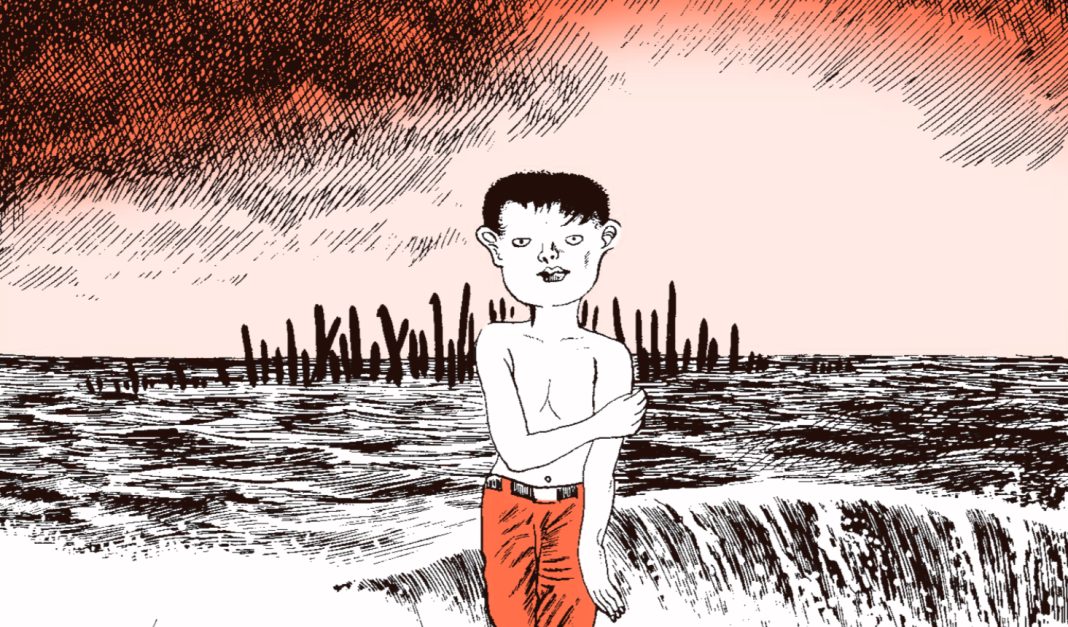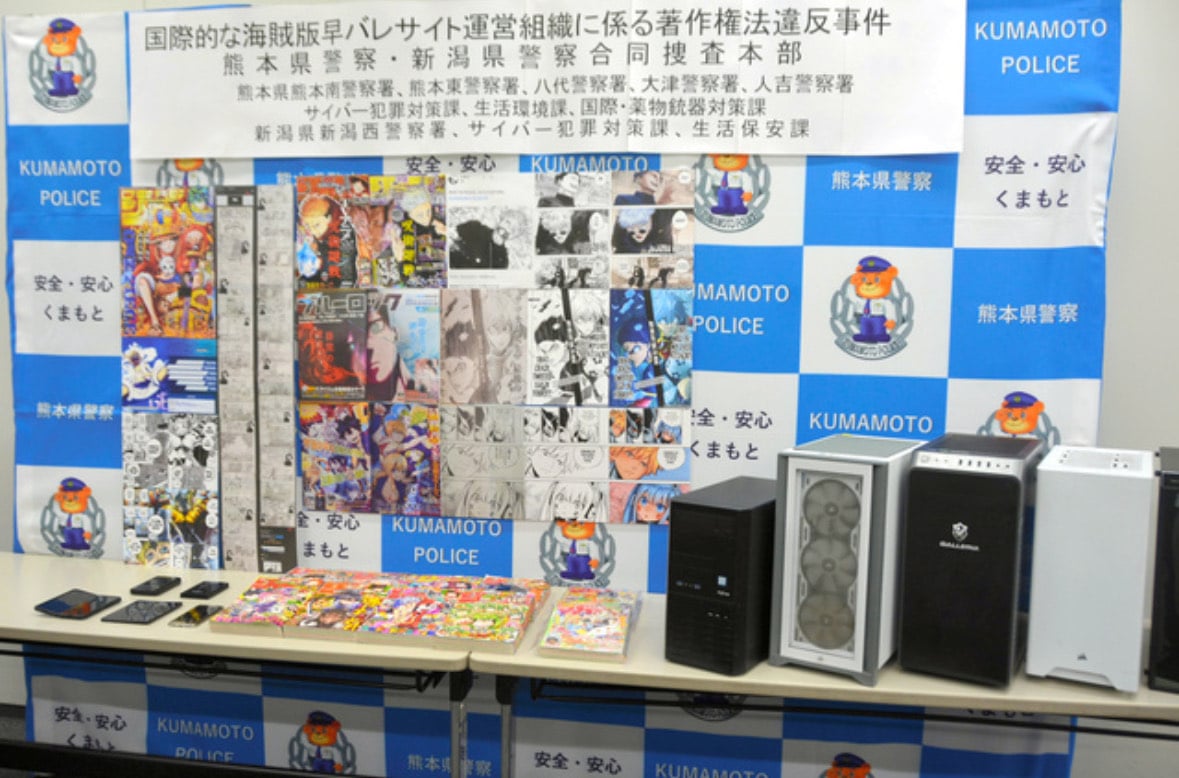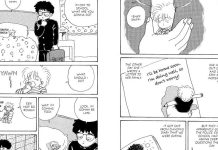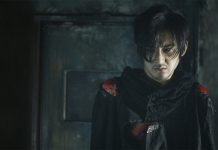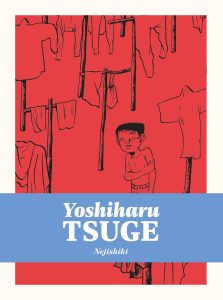
Written and illustrated by Yoshiharu Tsuge
Essay by Ryan Holmberg
Translated by Ryan Holmberg
Lettered by Anna Haifisch
Published by Drawn & Quarterly
Publication Date: October 3, 2023
Genre: Gekiga, Horror, Drama, Surreal Fiction
NSFW ALERT: This review includes sexually graphic content. Discretion is advised.
Nejishiki is the third volume of Drawn & Quarterly’s latest collection of short stories by Yoshiharu Tsuge from their must-have seven-volume compendium of The Complete Mature Works of Yoshiharu Tsuge. The gorgeous hardcover book consists of seven short manga stories, plus an essay by comics historian Ryan Holmberg that provides historical and critical context for Tsuge’s life and work.
Yoshiharu Tsuge stands as a key figure in Japan’s alternative manga scene and artistic counterculture. Tsuge is renowned as the pioneer of shishōsetsu, the semi-autobiographical “I-novel” genre of manga-making, where the author’s personal experiences are presented as mind-bending fabrications that are nonetheless held up as truthful. Tsuge adorns his daily life and travel stories with elements of magical realism, leaving his readers wondering about what fragments of his stories are autobiographical or fictional.
Tsuge’s prominent influence has been recognized by comics professionals in Japan and abroad. At Angoulême International, he was nominated for the Best Album in 2005, and then, in 2020 was recognized for his outstanding career. In 2017, his work, A World of Dreams and Travel, won the Japan Cartoonists Association Grand Award. In 2022, he made history as the first mangaka to be inducted into the prestigious 103-year-old Japan Art Academy alongside Tetsuya Chiba, co-creator of iconic boxing manga Ashita no Joe.
Nejishiki, the first story included in this collection, portrays a profound shift in the career of Yoshiharu Tsuge. Originally published in 1968 in the legendary alternative manga magazine Garo, this surrealistic story solidified Tsuge’s standing as a luminary in the world of gekiga (dramatic pictures) — a term coined by Yoshihiro Tatsumi, one of Tsuge’s main influences. It’s hard to define gekiga, but it predominantly focuses on detailed, evocative backgrounds and explores social issues, human relationships, and the struggles of everyday life. To this day, Nejishiki is the most studied and critically-acclaimed comic of Japan’s 1960s counterculture, thanks to its avant-garde storytelling and oneiric symbolism.
This volume is conveniently titled after the defining work that is Nejishiki, as the other stories follow some similar thematic paths. Interestingly enough, the translation for the title “Nejishiki” in English is “Screw Style,” which adds a bit of sexual innuendo that, although not intended and non-existent in the original Japanese title, is certainly fitting of the type of stories included.
The first story, Nejishiki, reads like taking a walk in a dream — a dirty, sometimes disturbing nightmare. Although Tsuge has been cryptic about whether this story is based on a dream, his critics seem to be fine with this interpretation and so am I. Regardless, one thing is crystal clear — this volume is a wild expedition into Tsuge’s most unhinged and carnal fantasies. Whether a product of his subconscious or not, these desires are vividly etched onto the pages of this chapter of his career.
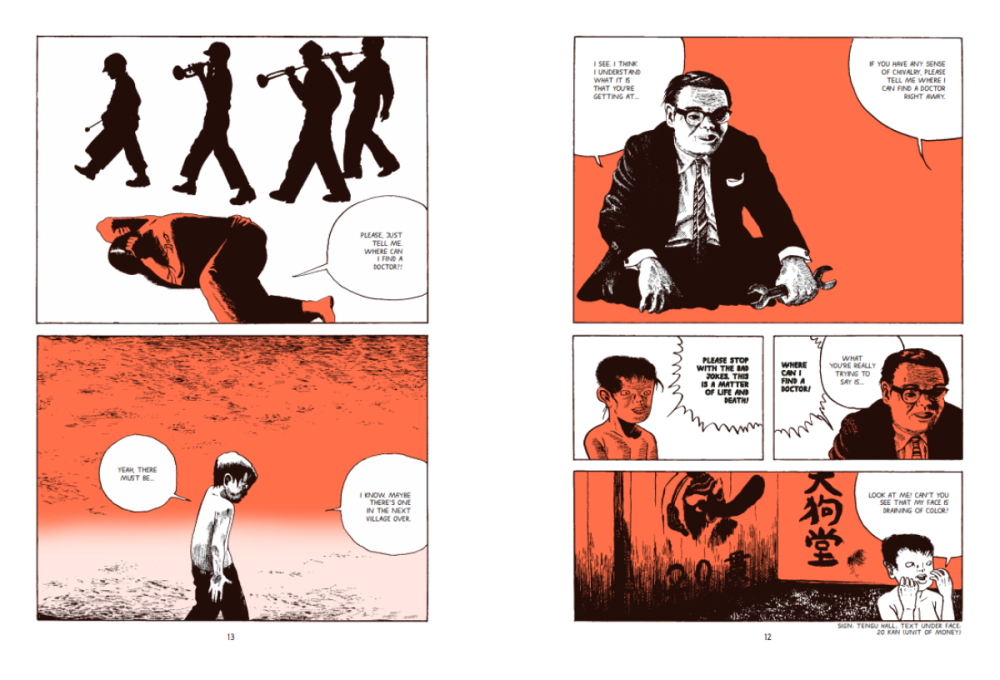
The narrative in Nejishiki plays around with our expectations. The story follows a fatigued, frail young man through a strange town as he relentlessly searches for a doctor. Despite his apparent vulnerability, the character’s demeanor is deranged, leaving us questioning his sanity. The man takes charge of his fate by walking out of the hollow town, yet his efforts end up futile. Fate, working in mysterious ways, renders his efforts meaningless, as he takes a train that brings him back to the same place where he started. The forces acting upon him supercede common sense, wresting control from his hands, and leaving us bewildered by the surreal turn of events.
Tsuge’s storytelling is certainly reminiscent of dreams where you find yourself entangled in strange, otherworldly scenarios that you’re desperately struggling to escape, but anything you do is useless. In Tsuge’s dream worlds, the reader is merely a passenger of the workings of the mind, in this case, fate.
Tsuge adeptly captures the unsettling sensations of anxiety and suffocation in Master of the Willow Inn, by playing the theme song of northern Hokkaido prison break movie Abashiri Prison. The song plays as the unnamed protagonist breaks away from the studio where a nude woman questions his intentions encapsulates the uneasy limbo between chasing after something and losing control, a hallmark of dreamscapes.
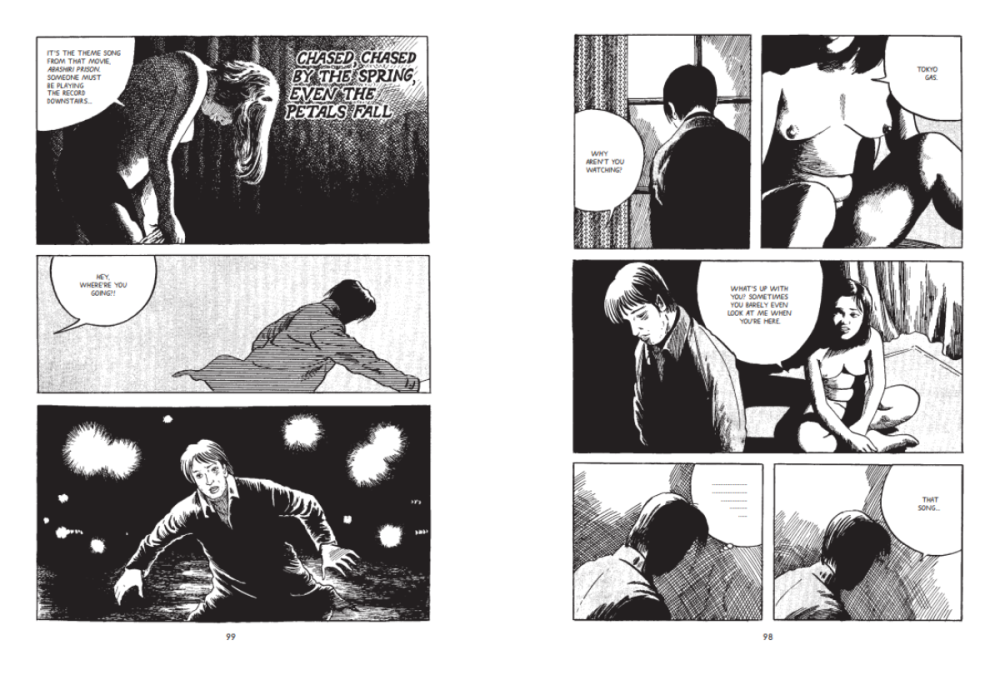
In this collection of Tsuge’s dream worlds, once surrealism has lowered your guard, it will suddenly ambush you with a quick escalation of sexual conflicts and desires. Like in A Dream Stroll, the protagonist is suddenly consumed by a bottomless lust and assaults a mother in front of her child, using her to release his carnal desires. What these characters sought all along was nothing more than that primal, sexual release — to go crazy, to let go of rationality, and to be led by their most untamed instincts.
In these short stories, women are often reduced to mere objects, existing solely to satisfy the predatory male characters. In Master of the Gensenkan Inn, the deaf woman, when molested, does not resist. Rather, she embraces her own perverseness. She, along with the rest of the female characters in these short stories, are portrayed as easy and libidinous. The sex scenes are far from sensual or pretty. They are a descent into the morbid, the savage, and the animalistic side of humanity. Clearly, the degradation of women vividly accentuates that this short story collection is an unfiltered window into Tsuge’s rawest, most unhinged sexual fantasies.
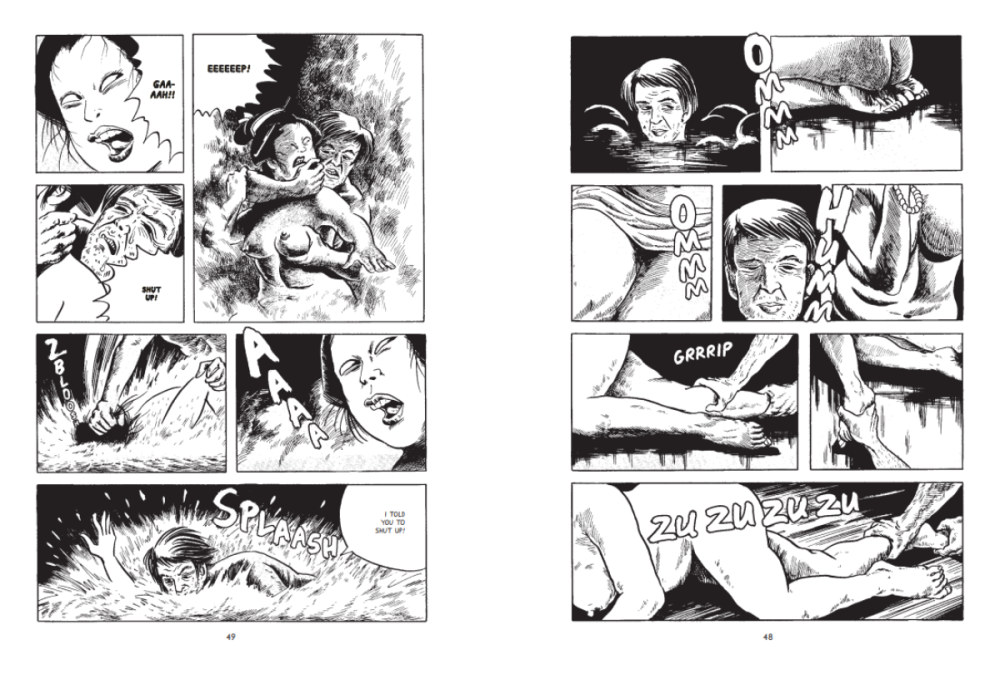
Beyond the rawness and horror of these fantasies, the stories delve into some of Tsuge’s intimate and repressed emotions. The protagonist’s reaction after molesting an unconscious girl in A Summer Memory hints at guilt, desperation, nostalgia, remorse, and paranoia — feelings that disrupt the boundaries of reason. Were these emotions a by-product of Tsuge’s struggling living conditions at the time? The blurry line between reality and fantasy makes me wonder: Just how much of Tsuge’s life seeps into these enigmatic stories?
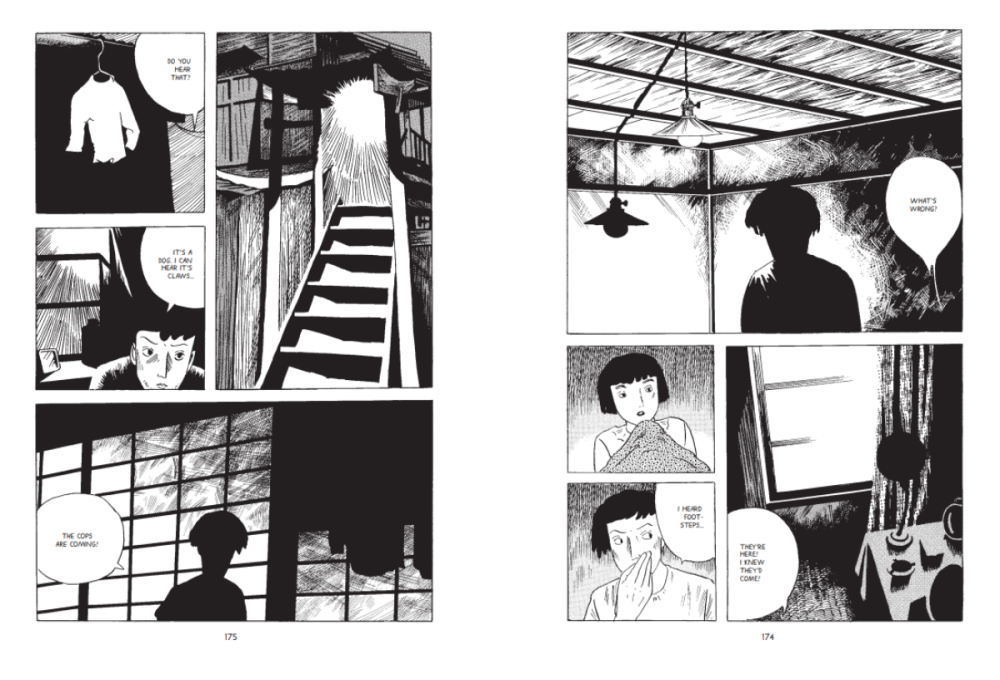
On another note, Tsuge’s art takes a detailed, potent turn, amplifying these disturbing and pungent emotions. The realistic backgrounds in Nejishiki are the biggest standouts, using stippling and noise to craft a textured, immersive, and consistently gruesome and eerie ambiance. Also, the intricate lines and pitch-black shadows in Master of the Willow Inn were used to highlight the female characters’ nude outlines and her arousal.
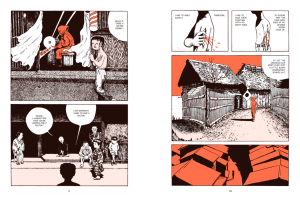
By now, one thing should be clear: Nejishiki is not your ordinary Tsuge manga. Nejishiki introduces an unleashed Yoshiharu Tsuge, releasing disturbing worlds and the horrors of the soul. The existential dread and profound ecstasy in Nejishiki reveal a side of Tsuge we don’t often see, which has now been hyperbolized. This volume encapsulates that dramatic shift in both narrative and art style, a striking contrast with his previous works at the time.
Naturally, I was stunned. As I was reading through Nejishiki, I kept thinking: “This is just wrong!” I was easily disturbed by the overtly graphic imagery, I was repulsed by the morally corrupt characters, and its unsavory vividness left me squirming. After reading the first two volumes of this collection (Red Flowers and The Swamp), I was not expecting the legendary Yoshiharu Tsuge to be so naughty! To say that I was experiencing a severe case of cognitive dissonance would be a gross understatement.
Thankfully, the book comes with a brilliant 60-page essay by Ryan Holmberg. Holmberg dives into the world of Tsuge manga and provides insightful biographical details and context to treat my dissonance. The essay goes deep into Tsuge’s literary inspirations, touching on his travels through Japan and his time as an assistant to Shigeru Mizuki, known for his demons and yokai manga Akuma-kun and Kitaro. Holmberg also uncovers Tsuge’s postwar struggles and attitudes, offering a comprehensive exploration of Yoshiharu Tsuge’s origins and the essence of Nejishiki and the rest of the short stories.
While I suffered tremendously when reading Nejishiki, I was captivated by the cacophony of oddities and intrigued to see the heights and depths that Tsuge could reach. So please, don’t let my terrible experience discourage you from giving this manga a try. It is an absolute must-have for all gekiga or alternative manga fans and collectors. It’s a wild ride charged with raw emotions that’s worth a look — unless, like me, you have a low tolerance for explicit content. Even so, the volume’s remarkable ability to vividly evoke these intense emotions is undeniably noteworthy. While I have some misgivings about some of the content, I don’t regret going on this ride to experience this work. Bearing witness to Tsuge’s extraordinary and dreamlike storytelling is an experience well worth undertaking.
The first three volumes of The Complete Mature Works of Yoshiharu Tsuge are currently available from Drawn & Quarterly.


